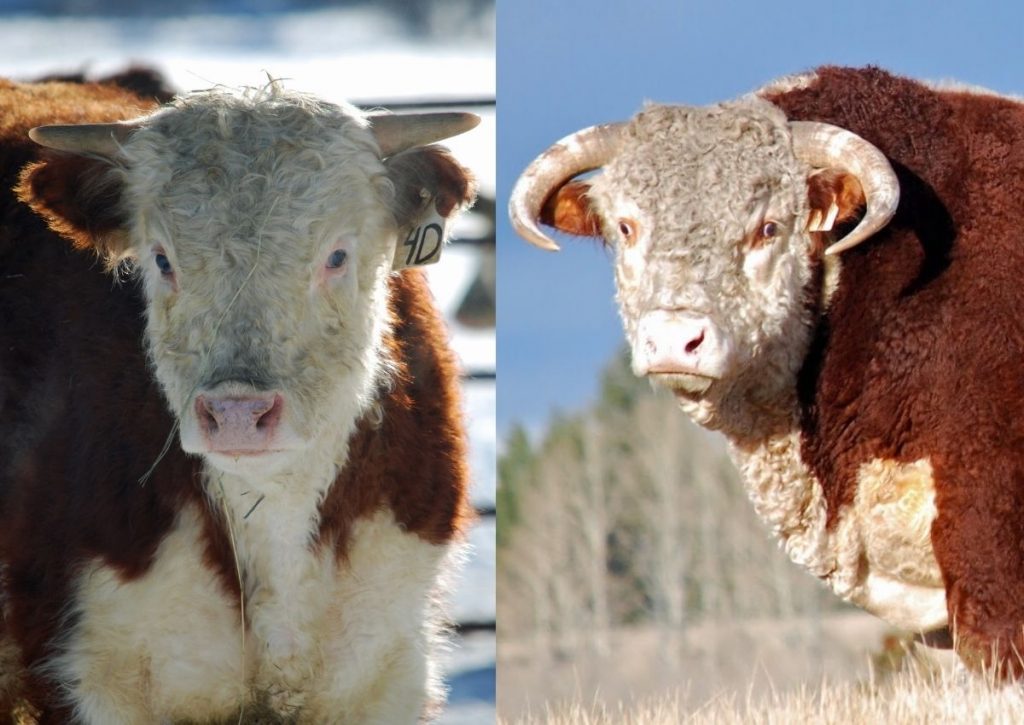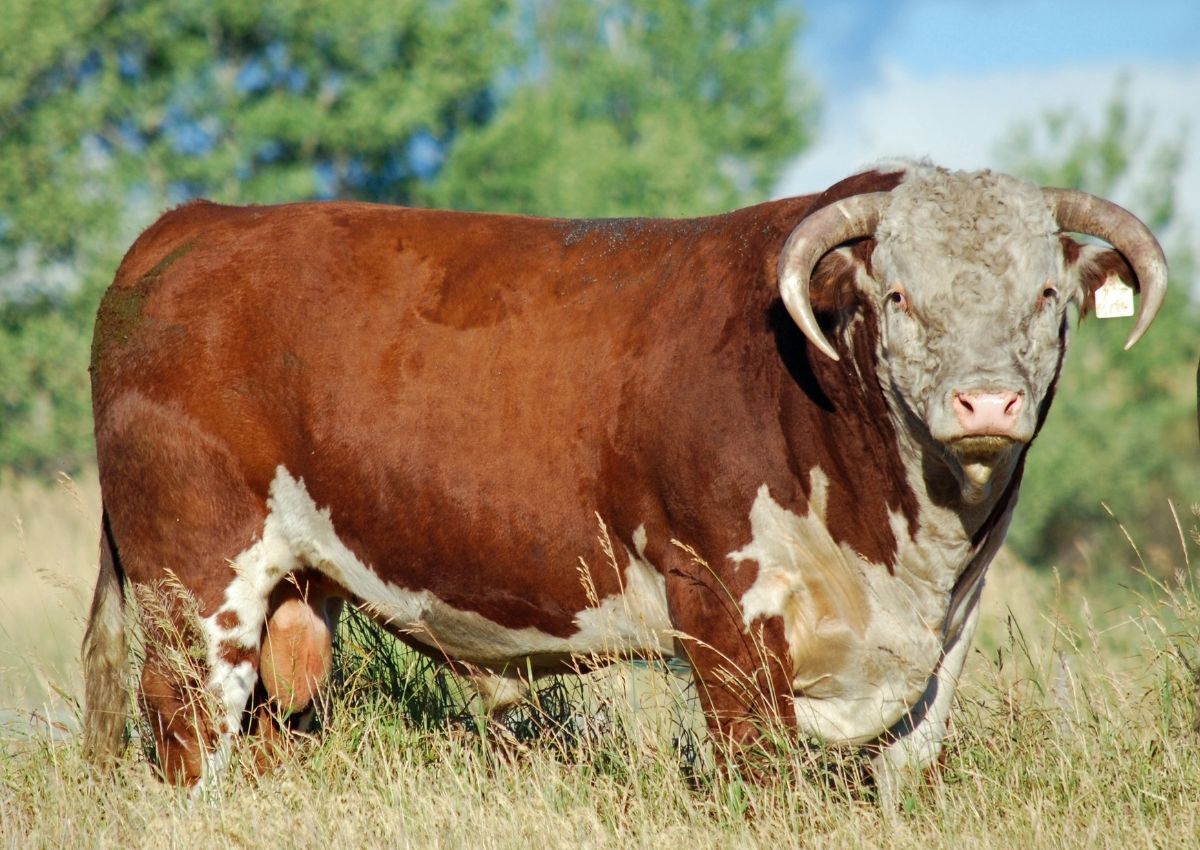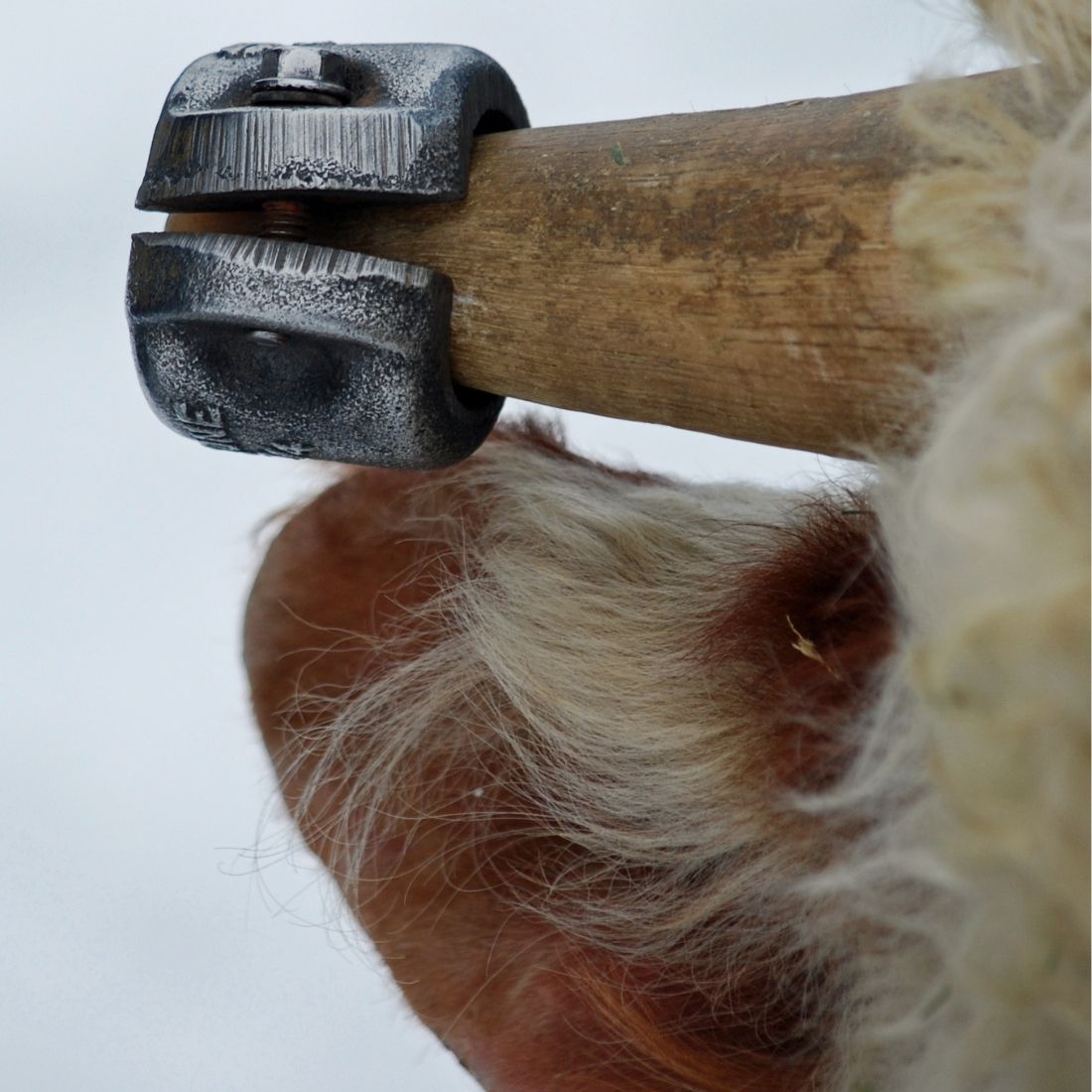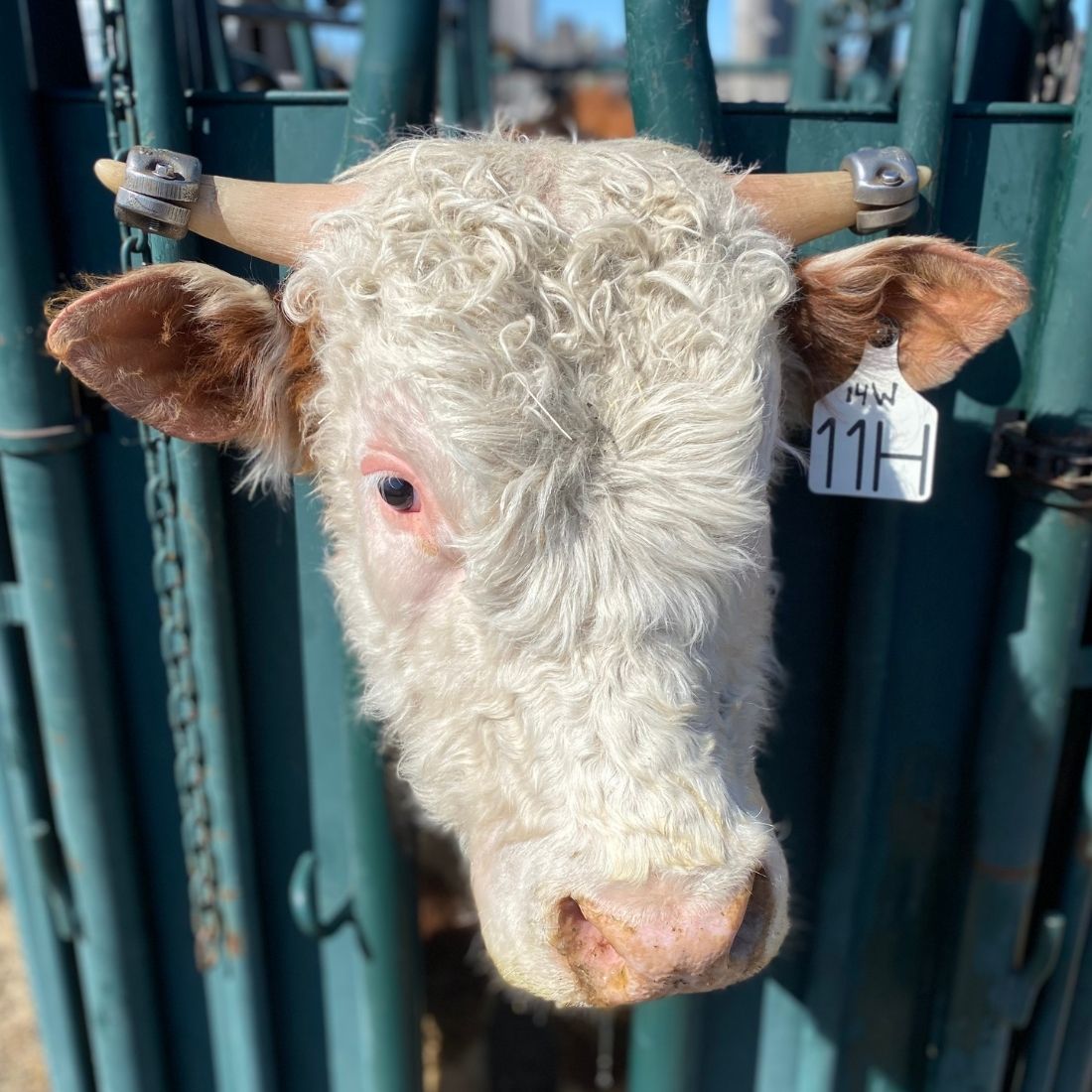You may have noticed cattle with horns that are curved and you may have seen some cattle which have horns that are not curved and instead grow upwards? So how do they get curved? Does it occur naturally? Or is something done to help the horns curve?

Horned Hereford Cattle
We raise Horned Hereford cattle; therefore, each calf is born with horns. We leave the horns on our bull calves and then curve the horns when the bull calf is approximately 10 months to 1 year old. We remove the horns on our our heifer and steer calves by dehorning them with a paste within 24 hours of birth.

Polled Hereford Cattle
Not all cattle are born with horns. Many breeds have been selectively bred to not have horns, these are called polled cattle. In the Hereford breed, there are Horned Herefords and Polled Herefords. The Polled Hereford is a hornless covariant of the Hereford with a polled gene, which was selected for starting in 1889.
Curved Horns Using Horn Weights
Horn weights are how we get the horns to curve.

The horn weights that we use weigh between 0.5 lb. to 1 lb and they are tightened onto the horns so that the horns slowly curve downwards. We check the bulls each time we feed to ensure that the weight is still on and to watch to see how much the horns are curving.

Once the top of the horn has turned enough that the tip of the horn is parallel with the middle of the ear, we will take the weight off. Sometimes, one side will need to be taken off before the other so it sometimes involves two trips through the cattle squeeze. The time going through the cattle squeeze is good as it helps the bulls get more familiar with us. We halter break all of our bulls so when they go through the squeeze we usually lead them as they come out.

It takes the bulls a little bit of time to get used to the extra weight on their horns, but it definitely doesn’t appear to hurt them. There are two tiny little points on the inside of the weight to help keep the horn weight on, but those are quite small.
Horn Tipping – Sloping Method
Some cattle producers no longer use horn weights, and instead use the sloping method. This method can reduce work load, as it takes time to put the horn weights on, replace horn weights which may fall off, monitor the curving of the horns and then take the horn weights off at the correct time. Removal of the horn weights can sometimes involve 2 trips to the cattle squeeze if one horn turns faster than the other. In comparison, sloping usually only requires one trip through the cattle handling system.
Horn tipping is the removal of the insensitive part of the horn which results in a blunt horn end. The sloping method helps to train the horn easily to curve while also reducing the size of the horn. However, the horn must be cut off in the correct angle so that the horn grows down, but also doesn’t curl into the animal’s face.
Why Do We Want Curved Horns?
Curved horns are safer for other cattle, less damage to infrastructure and safer for those who are working with the cattle.
Childhood Memories
My best childhood memory of horn weights is when my grandpa and grandma would pay us if we found horn weights in the corrals. At that time, we were putting horn weights on 30-40 bulls so we definitely had some fall off and get lost. When we found them in the dirt, we would get $1 for a horn weight with 2 points inside or $0.50 if there was only one or no points! It was a great way to keep us entertained in the barn yard. I definitely made a few dollars over the years!
So the next time you see a cow or bull, check out if it has horns and if so, if the horns have been curved.


